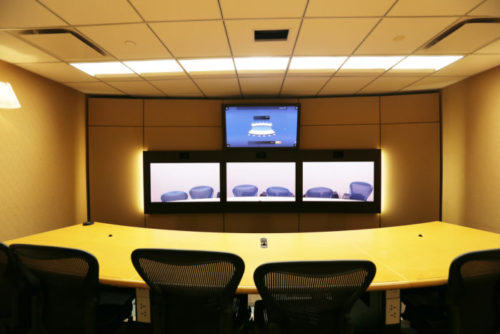Are we witnessing the death of video hardware as we know it? It appears that we’re in the midst of a paradigm shift in enterprise communications towards a more cloud-based, software pervasive, mobile-friendly world.
It’s been a slow death for video hardware and the following trends represent the finishing blow that will take out dedicated hardware endpoints for good.
Inoperable Video Hardware
The advantages of dedicated video hardware (being dwarfed by the advantages of lightweight user-friendly software clients) are quickly becoming a thing of the past. Software-based services like Skype for Business are making it less and less necessary to get IT involved in every situation where the end-user didn’t read the manual.
For example: Skype and Skype for Business are designed to play nicely with each other. As mention in this article by Jeff Schertz, Lync Server MVP, the need for enterprise video interoperability can be addressed with a variety of methodologies – one of those being native endpoint registration. “As the name suggests, this means that no back-end interoperability solution is used. The Lync or Skype for Business environment is used as the sole conferencing engine and all endpoints (software clients and hardware devices) will connect directly and natively to these environments wherever they may reside.”
Personal And Mobile Devices
Another powerful force moving against the hard-headed dedicated video hardware devices are the spread of personal and mobile devices in the workplace. This shift to accommodate users with a plethora of mobile devices for communications is best demonstrated in the behavior of all of the legacy vendors (Cisco, Polycom, Avaya etc.) who now offer UC clients that universally support desktop video conferencing. This is only the beginning.
Ideally, users who bring mobile devices to work will expect enterprise communication and collaboration that works across these devices and won’t require a training manual for each one. Mobile devices today support high definition video, sometimes even with multiple HD cameras.
Stagnant Market Trends
Research shows that enterprise video hardware revenues are expected to flatline through 2020, while video software is showing projected growth trends year over year. If the market isn’t a sure indicator that we are witnesses a slow death of hardware then I don’t know what is.
Video conferencing has it’s barriers to entry as early adopters are well aware of namely it’s costs which include large upfront investments and heavily impacted IT resources. Unified communications and cloud-based video conferencing solutions on the other hand require lower up front capital costs and easily scalability in case the organization needs to shift resources or scale up or down. Upfront capital cost savings are an added bonus considering some of the value software clients are bringing to the table these days.
WebRTC
Virtual MCU’s from Pexip and Acano to WebRTC platforms – virtualization is kicking it up a notch eliminating almost any need for enterprise hardware. Recently Gartner released a report citing a few of the coolest in UC, “Cool Vendors in Unified Communications, 2015”. CafeX, a WebRTC based software development on the top of the list enables engagement inside and outside of the enterprise with a super user-friendly interface and unparalleled mobility. Highly unlikely that any hardware-only vendors (if any still exist) made this list.
A Changing Workforce
It’s the year 2015. The generation entering the workforce has been exposed to anytime, anywhere video communications thanks to Facetime, Google Hangouts and Skype. That expectation will carry on into the workplace no doubt in the coming years, and bulk of competitive enterprises are already adapting to the changing tied.
It’s too risky to be headstrong in today’s technology environment, and IT is prepared to act quickly to satisfy the needs of new talent with the communications of the future. If they don’t, we’ve seen that this generation of employees will not hesitate use the information technology that we’ve all been blessed with to find a workplace better equipped to cater to the lifestyles of digital natives. People have dropped high-quality cameras for cell phones and will do the same with video endpoints.
Do you agree that we’re witnessing the slow death of video hardware? Many people argue that the conference room still has a place in the enterprise collaboration world. There are many organizations who believe that a high-quality video collaboration experience is important, and immersive systems won’t be replaced by software clients anytime soon. Organizations aren’t quite ready to give up their desktop endpoints and conference rooms just yet, and the conversation in IT seems to center more on getting software and hardware to play nice.







